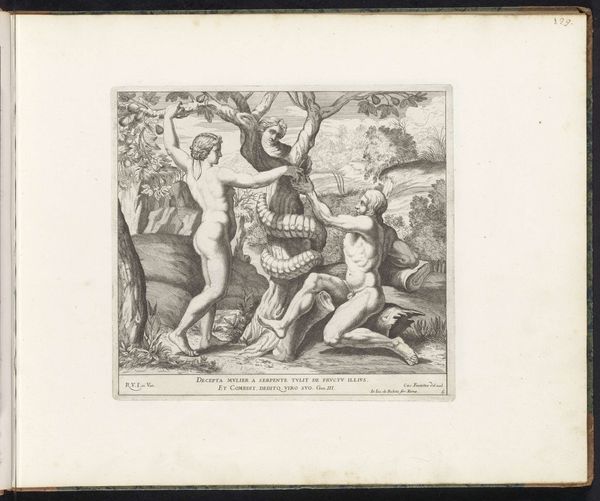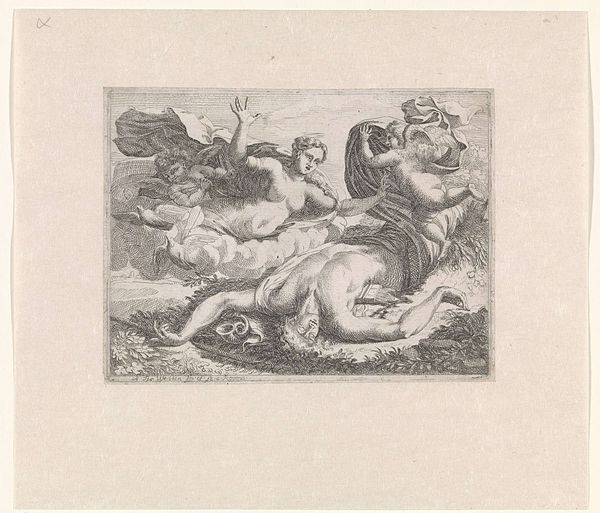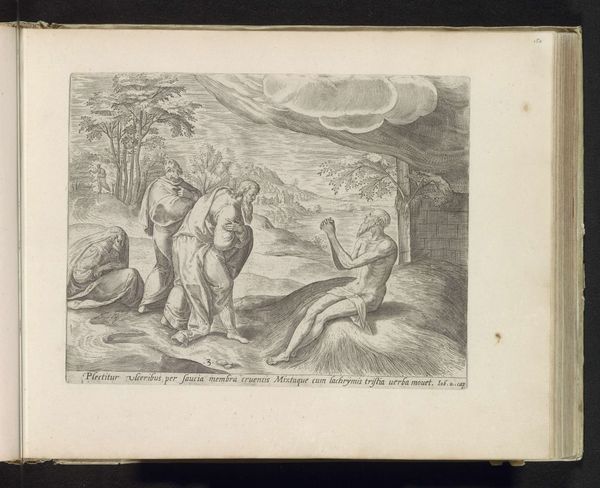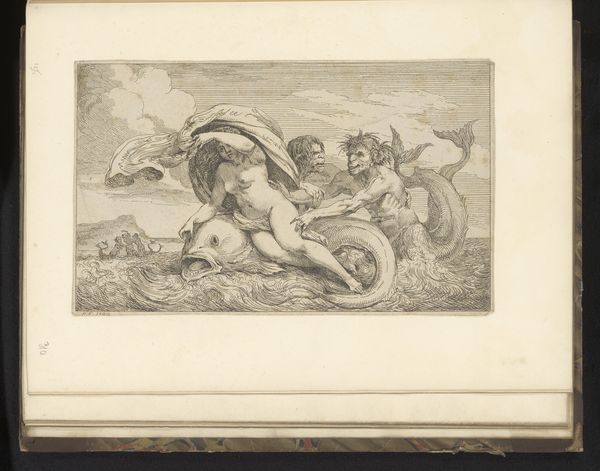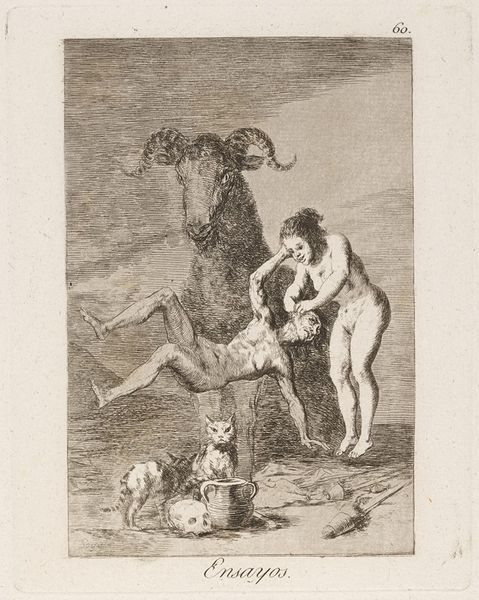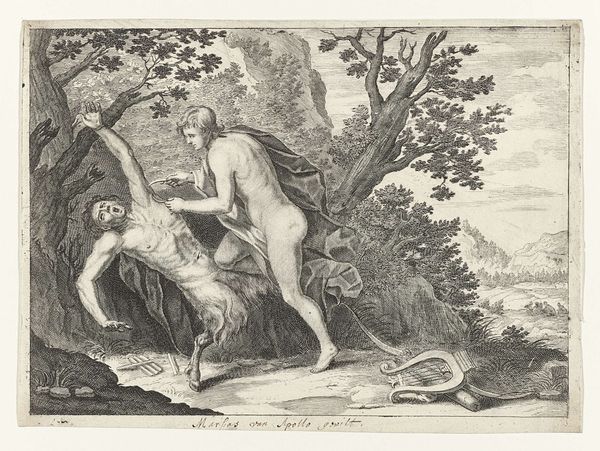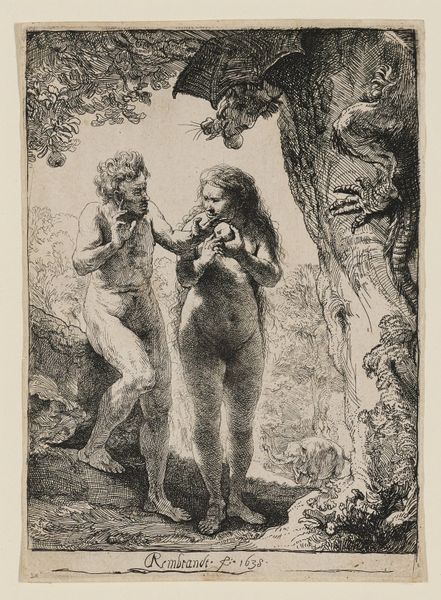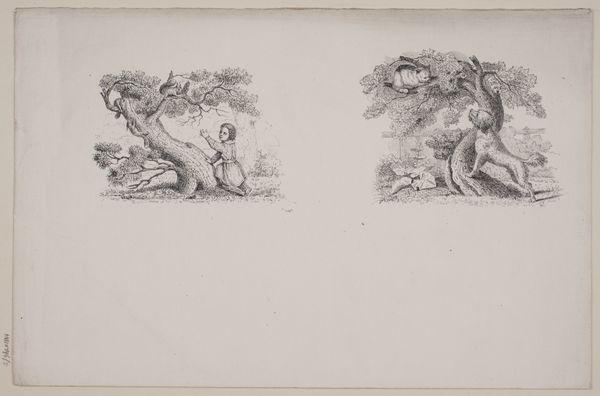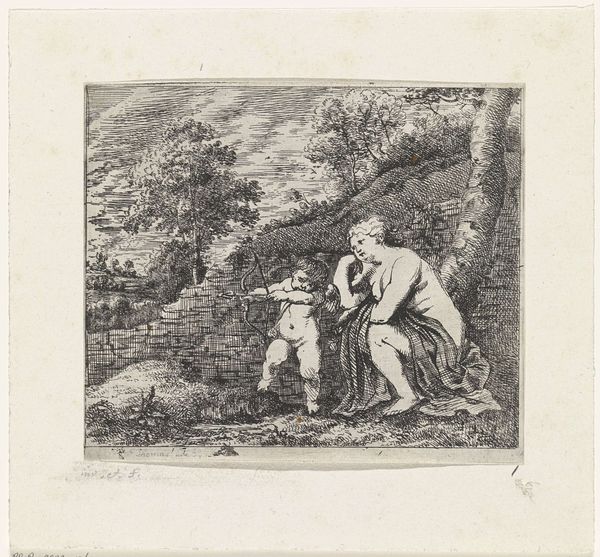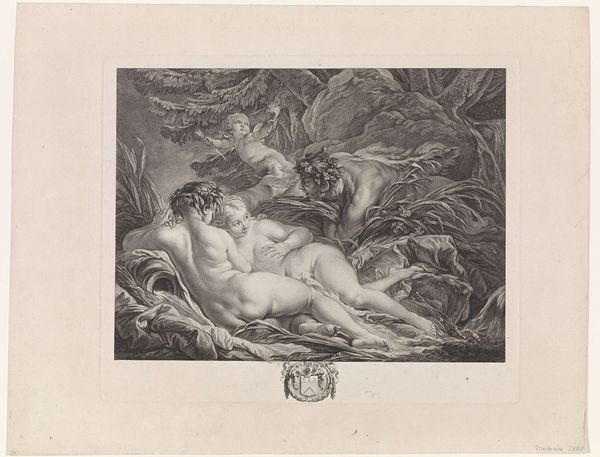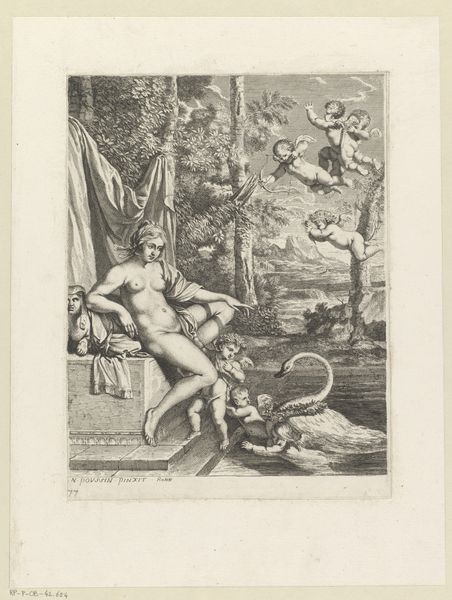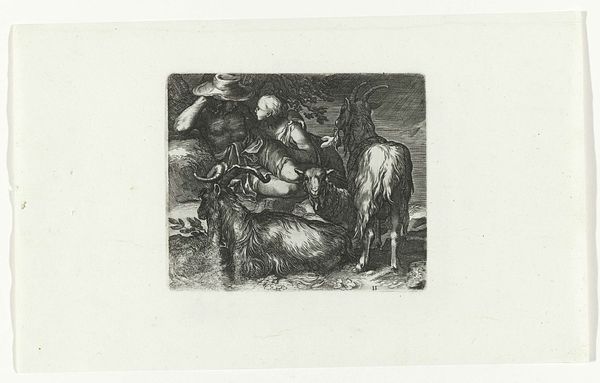
drawing, pencil, charcoal
#
drawing
#
landscape
#
charcoal drawing
#
figuration
#
vanitas
#
pencil
#
genre-painting
#
charcoal
#
history-painting
#
nude
#
watercolor
#
realism
Dimensions: height 243 mm, width 360 mm
Copyright: Rijks Museum: Open Domain
Curator: The atmosphere immediately feels weighted, burdened by impending consequence. There's a somber stillness captured here. Editor: Indeed. Let’s contextualize this artwork for our listeners. What we’re viewing is Moses ter Borch’s “Adam en Eva,” a charcoal and pencil drawing, created circa 1655-1660 and now held at the Rijksmuseum. It encapsulates the pivotal moment of the Fall. Curator: Ter Borch’s choice of such raw materials—charcoal and pencil—really emphasizes the earthiness of the narrative. These are elemental materials that feel intrinsically linked to the origin story. You see how the landscape almost seems to press in on them. Editor: And note how Ter Borch blurs the distinction between human form and the natural world. Consider how the artist links our understanding of mortality to that of production and materiality—a key moment in how human labor and materials will forever change, resulting in the fabrication of our own clothes to cover ourselves, cultivating our own food. There's labor, but there is choice—which impacts the nature of existence. Curator: Exactly! This is so much more than just a literal depiction of a biblical scene. The inherent vulnerability of Adam and Eve's nakedness becomes a site of struggle for power. Think about the social norms around female representation and the way her body, the source of life, becomes objectified in relation to transgression and divine retribution. Eve becomes the scapegoat in this narrative, absorbing patriarchal notions. The snake itself, rendered so prominently, represents that societal serpent coiled within. Editor: The details though! Notice how the snake's human face looks slyly out at us from the trunk! But what I find remarkable is how the goat— a barnyard animal --becomes like another object present, of human possession-- alongside Eve. Curator: It’s easy to miss the subtle visual cues Ter Borch weaves throughout. The dog, the various other fauna, the skulls. He masterfully illustrates the inherent loss of innocence and, simultaneously, this budding patriarchal order! Editor: Reflecting on this piece, I’m struck by how a few simple materials and the means of its production allow such layers of meaning and debate to take place—truly something powerful about simple materials like pencil and charcoal that are both naturally sourced and in a way, very direct tools. Curator: Agreed, reflecting on these figures through both the historical narrative, and societal construction of gender in the face of authority reminds us of art’s role as cultural mirror.
Comments
No comments
Be the first to comment and join the conversation on the ultimate creative platform.
